In this ongoing series, we’ll be “unboxing” must-have digital marketing campaigns and programs vital to success. In this installment, we’ll take a look at customer milestone campaigns.
It’s a well-documented fact: Brands that send personalized birthday and anniversary emails generate more revenue than brands that only focus on mass-produced mailings.
However, this comes with a caveat: The research is over ten years old.
Ten years ago, there wasn’t the personalization technology that we have today. In 2020, consumers expect more—meaning brands have to do more than send a celebratory message once a year to get the attention, revenue and loyalty they’re looking for.
That’s why for this edition of Unboxing Must-Have Marketing Campaigns, we’re going to dive into a topic that brand marketers could use a new perspective on: customer milestones.
Read on to understand why customer milestones need to go beyond birthdays and anniversaries, and learn the three essential ingredients you need to build a stellar milestone campaign.
Download the complete guide to gain access to even more advanced, cross-channel tactics to give your messaging extra oomph.
Why Brands Need to Do More Than Send a Birthday Message
Before we dive in, we want to define how we think about customer milestones at Iterable.
A customer milestone is an event that celebrates the customer’s progress towards a goal they’ve set for themselves.
So birthdays celebrate a customer’s progress towards living another year.
And anniversaries celebrate an additional year of a customer’s patronage with a brand.
However, birthdays and anniversaries only happen once a year. If marketers are only interacting with customers on their birthday or anniversary without any other personalized communications in the remaining 364 days, they probably aren’t getting the ROI they’re looking for.
In fact, brands can go further with milestones to get a customer’s attention. But how?
How Identity Relates to Customer Milestones
If brands want to get the ROI they desire with a milestone campaign, they have to understand the basics of how individuals form their identity.
Identity, according to psychologist Shahram Heshmat, “relates to [an individual’s] basic values that dictate the choices we make […] these choices reflect who we are and what we value.”
An identity changes throughout an individual’s lifetime, so while it might seem like a great idea to blast your list with a once-a-year birthday message, the individual might have already moved on from your brand, which can send your milestone email straight into the trash.
However, there’s an opportunity here. In addition to birthdays and anniversaries, there are two types of customer milestones that can be celebrated.
1. Through a loyalty or rewards program
One way brands can celebrate customer milestones is through a loyalty or rewards program
For instance, hotel chain Marriott already offers a loyalty program to frequent travelers. “Levels” are assigned based on an individual customer’s spending activity and the “milestone” is when a new level is reached.


An email from hotel chain Marriott notifying a customer on their achievement of Platinum Elite.
Celebrating this milestone accomplishes a few things:
- Affirms a customer’s elite status as it relates to Marriott
- Makes the customer feel good about their achievement
- Informs them of the new perks they receive as a result of their loyalty
2. Activity tracking
Another way brands can celebrate customer milestones is by compiling what a customer did over the course of a year.
So, for example, music streaming application Spotify analyzes each individual profile’s listening habits for trends over the course of the year and creates new playlists for them.


A milestone email from Spotify detailing a listener’s top songs of 2019.
The type of music someone listens to is incredibly personal, so this milestone email affirms the listener’s taste in music, alerts the listener that there are customized playlists in their library, and (hopefully) gets them to continue streaming music.
Now that we have a few more examples of how brands can celebrate customer milestones beyond the birthday and anniversary, let’s break down the three essential ingredients a marketer needs to have before they build a milestone campaign.
3 Essential Ingredients You Need to Build a Milestone Campaign
1. A milestone to celebrate
To build a milestone campaign, brands need to know exactly what customers like to celebrate.
Luckily, you have lots of options to choose from.
Most people enjoy their birthday, so it’s not too much of a stretch to send them an offer as a birthday gift, like this email from a Seattle-based improv comedy group.
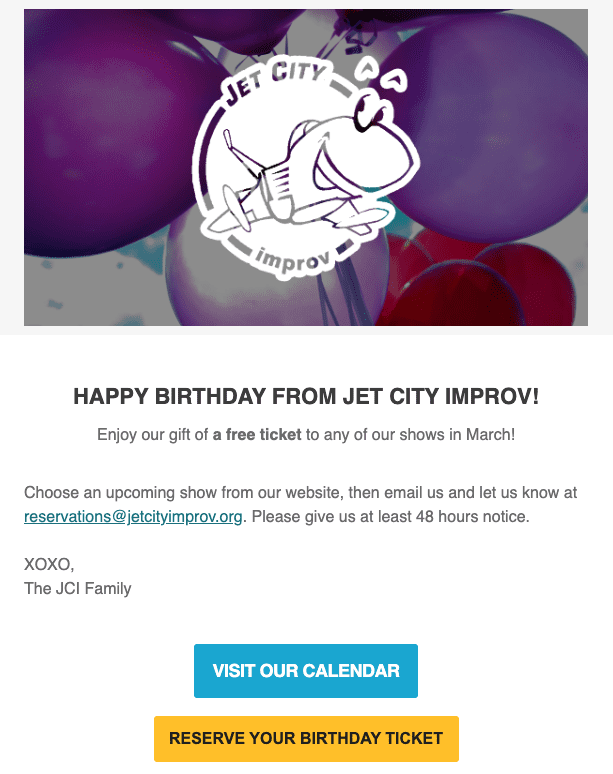

A Seattle-based improv group offers email subscribers a free ticket during their birthday month.
But it doesn’t even have to be the customer’s birthday. It could be that a business milestone was reached, like this 5-year company “birthday” email from temporary tattoo retailer Tattly.
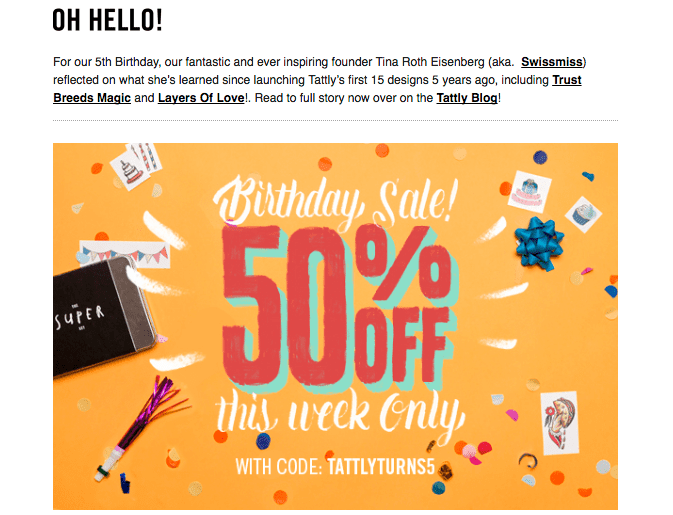

Tattly tempts their email subscribers with a 50% company birthday sale.
But if your brand chooses to track an activity, like software app Zapier does for their partner program, you’ll have to establish what the “levels” look like—and decide what information to add or omit in your milestone email.
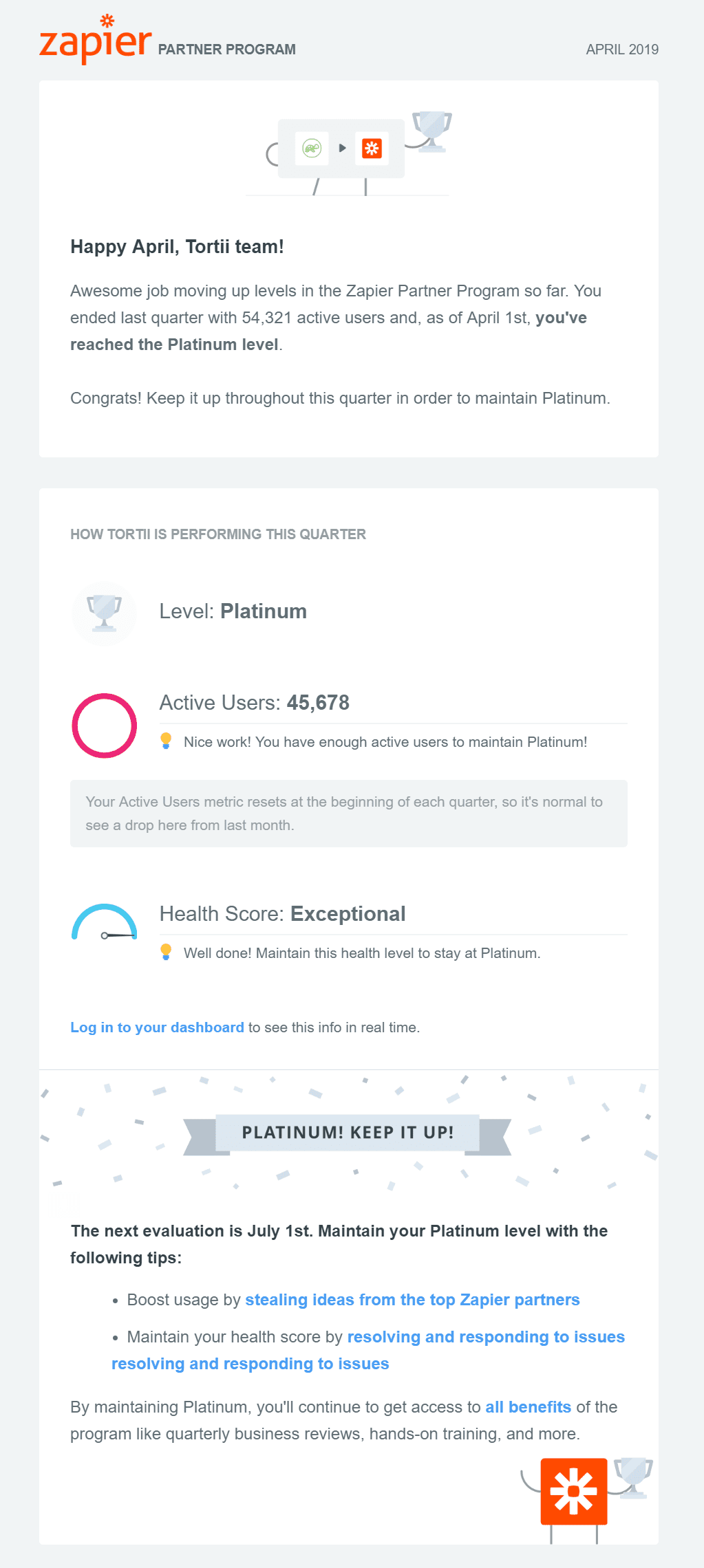

A quarterly milestone email from Zapier’s Partner Program.
Once you choose the milestone your brand wants to focus on, you need to make sure you have the right data in place to support it.
2. Data to support that milestone
Next, brands need data to support celebrating that milestone.
While it may be enough for an individual to use Facebook or Google Calendar to manage their contact’s birthdays, brands can have up to hundreds of millions of contacts in their databases.
Meaning? They have to get really good at automating some of their messaging; otherwise, email teams would be swamped with sending birthday cards all the time.
To do this, brands have to collect and store relevant customer data. They can do it through one of two ways: voluntarily or through tracking user behavior.
An example of voluntary data is when brands offer birthday gifts in exchange for customer information, like this pop-up form and birthday email used by retailer Madewell.
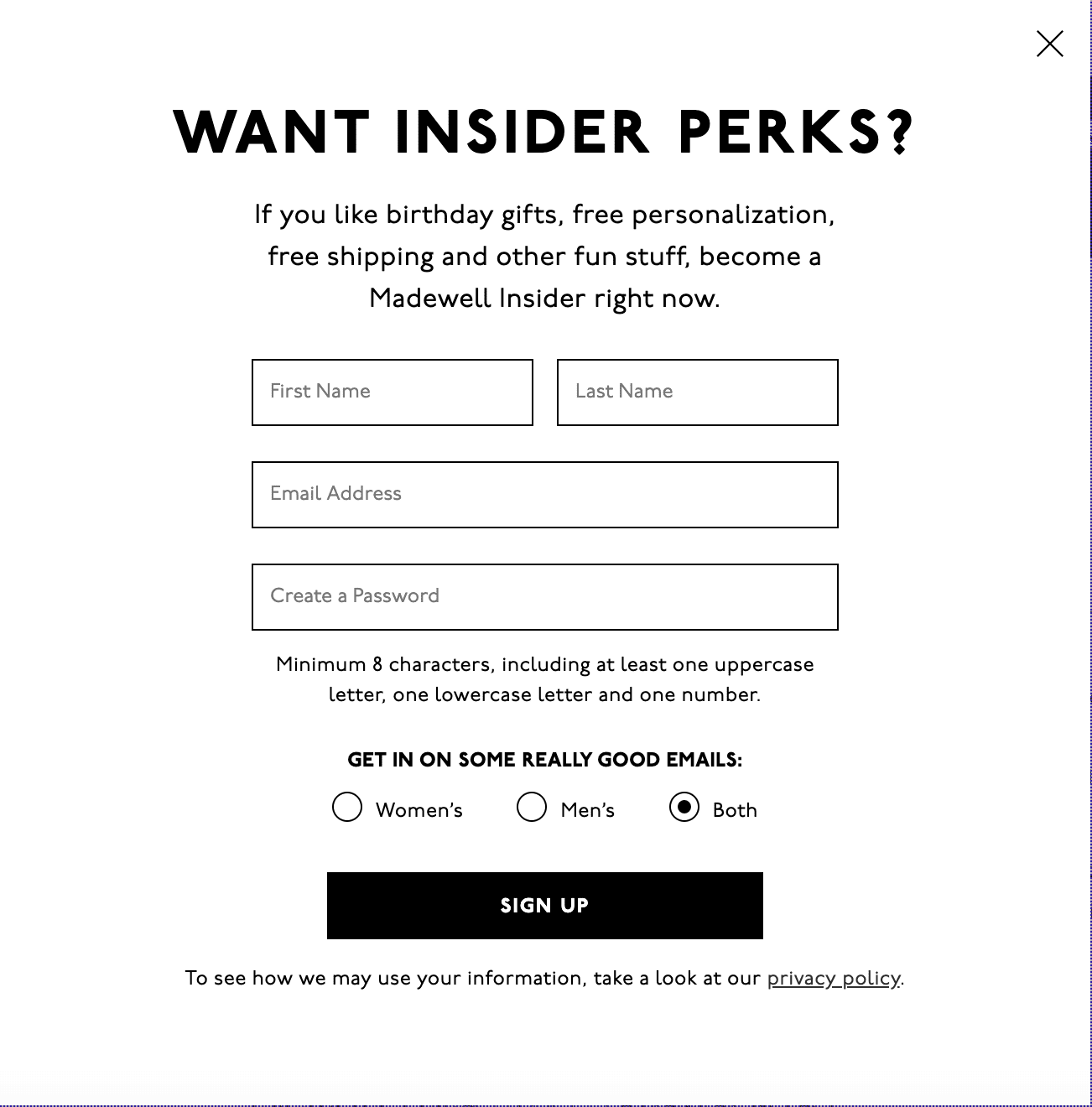

Once Madewell.com visitors sign up with an email address and password, users are sent to an account settings page to insert their birth month and day.
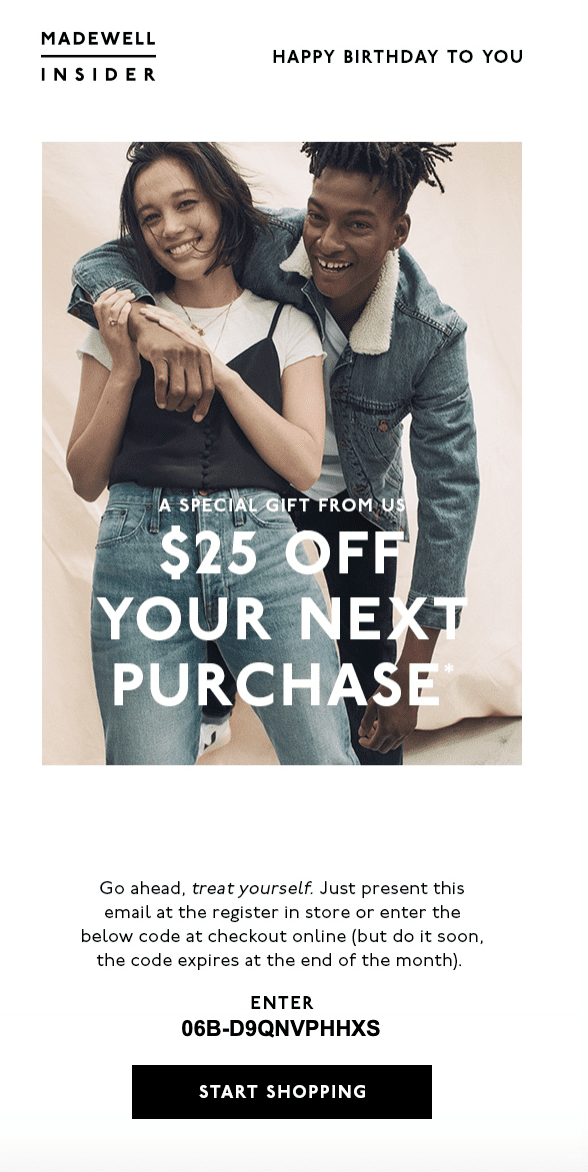

A birthday email from retailer Madewell.
Alternatively, brands can collect data on a customer by looking at what they purchased or did on a website or app and generate a milestone that way.
For example, the New York Times collects data on what subscribers read and click in order to generate the following anniversary email.
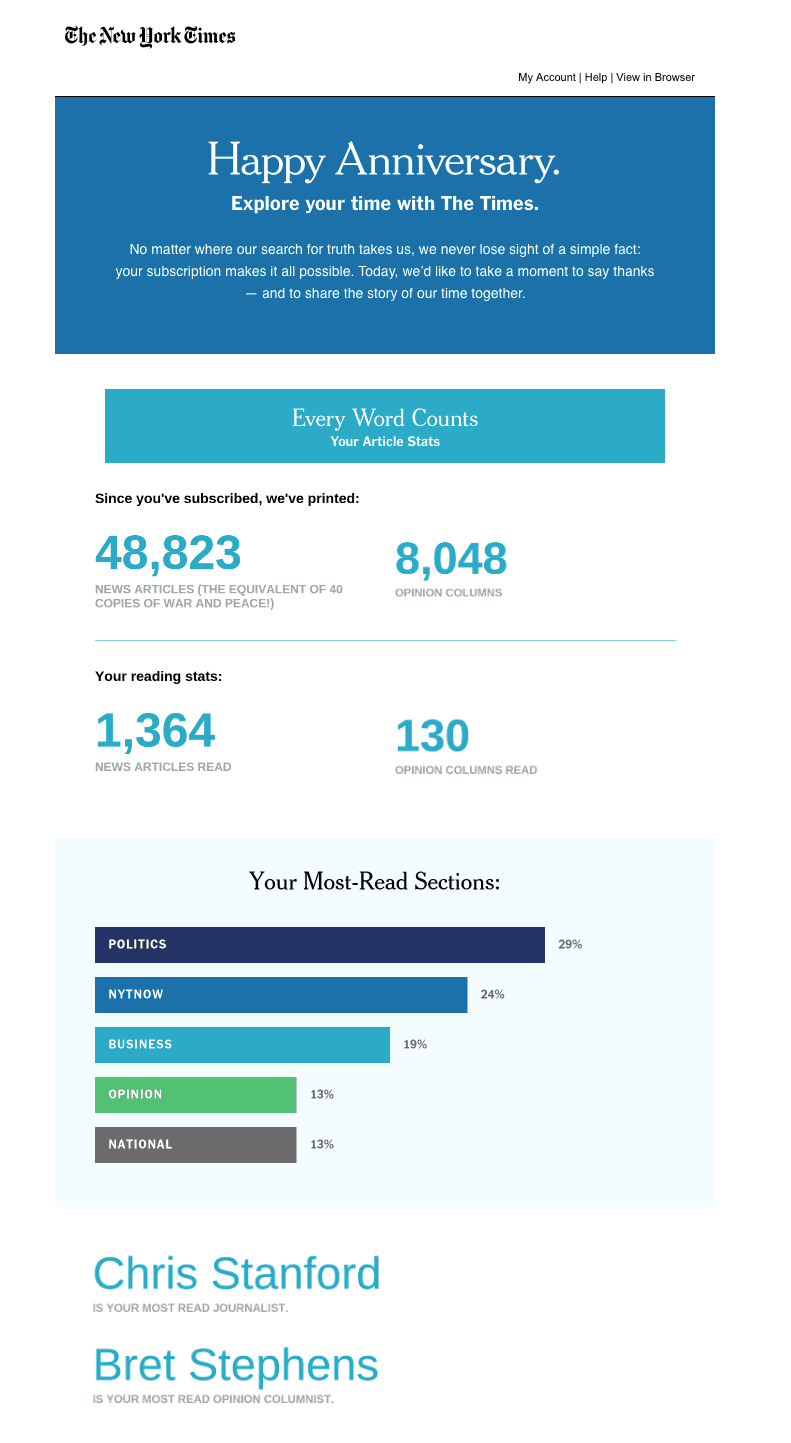

The New York Times sends an anniversary milestone email to each of their subscribers detailing what they read over the year.
Brands can’t run a milestone campaign like Madewell’s or the New York Times’s without accurate data. If you’re a marketer considering one for your brand, take the time to understand what sources of data you have access to before embarking on the email design process.
3. A relevant offer
Wishing someone well on a milestone is a nice touch, but the best brands always include a gift for the customer on their special day.
However, this can backfire if the offer isn’t personalized for the individual’s preferences.
Luckily, psychology researcher Robert Cialdini has the solution. For maximum impact, gifts should be:
- Meaningful and unexpected—as in, there needs to be an element of surprise. A good example is when a waiter at a restaurant brings out free dessert after dinner. It’s a nice gesture to the customer (and most likely will result in a higher tip for the waiter).
- Customized—as in, the benefit is based on their environment, likes and dislikes. So for instance, if someone buys their employee a Starbucks gift card and that employee doesn’t drink coffee, the gift suddenly loses its meaning.
One brand that meets these two criteria is BarkBox, who celebrates their canine customers’ birthday or adoption day with a fun email (and an offer to add a special treat to the regularly scheduled subscription box).
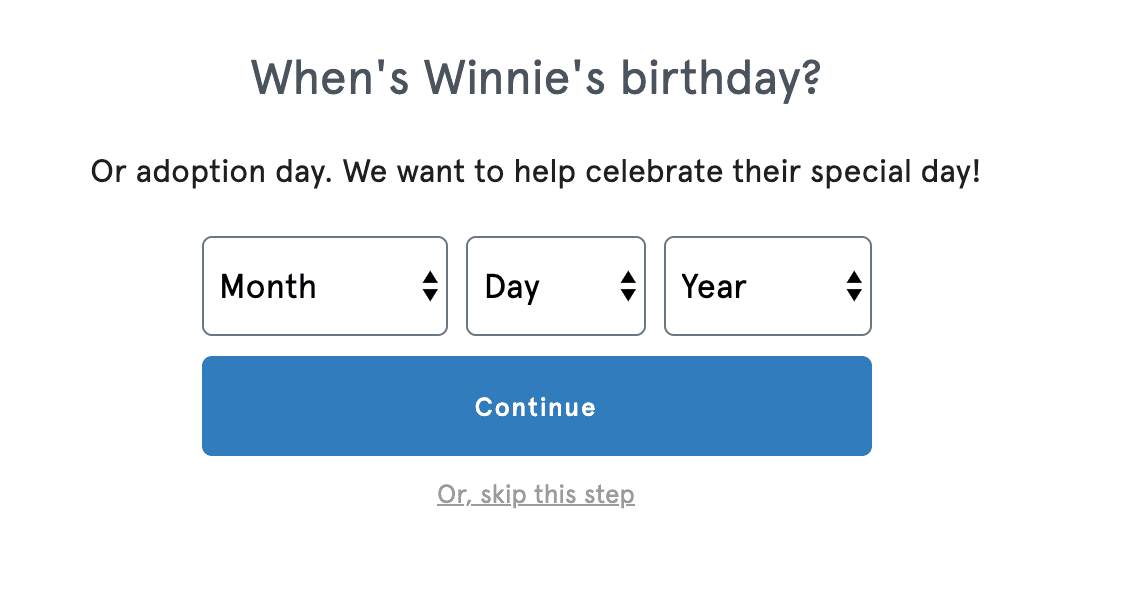

When customers sign up for BarkBox, the intake form asks for their dog’s birthday or adoption day.


BarkBox sends emails to customers on their dog’s birthday or adoption day with a special add-on offer.
Another brand that gives a relevant offer is cosmetics retailer Sephora. If customers are part of their Beauty Insider loyalty program, they get to add a free birthday gift to their next purchase and receive recommendations for additional products based on their astrology sign.
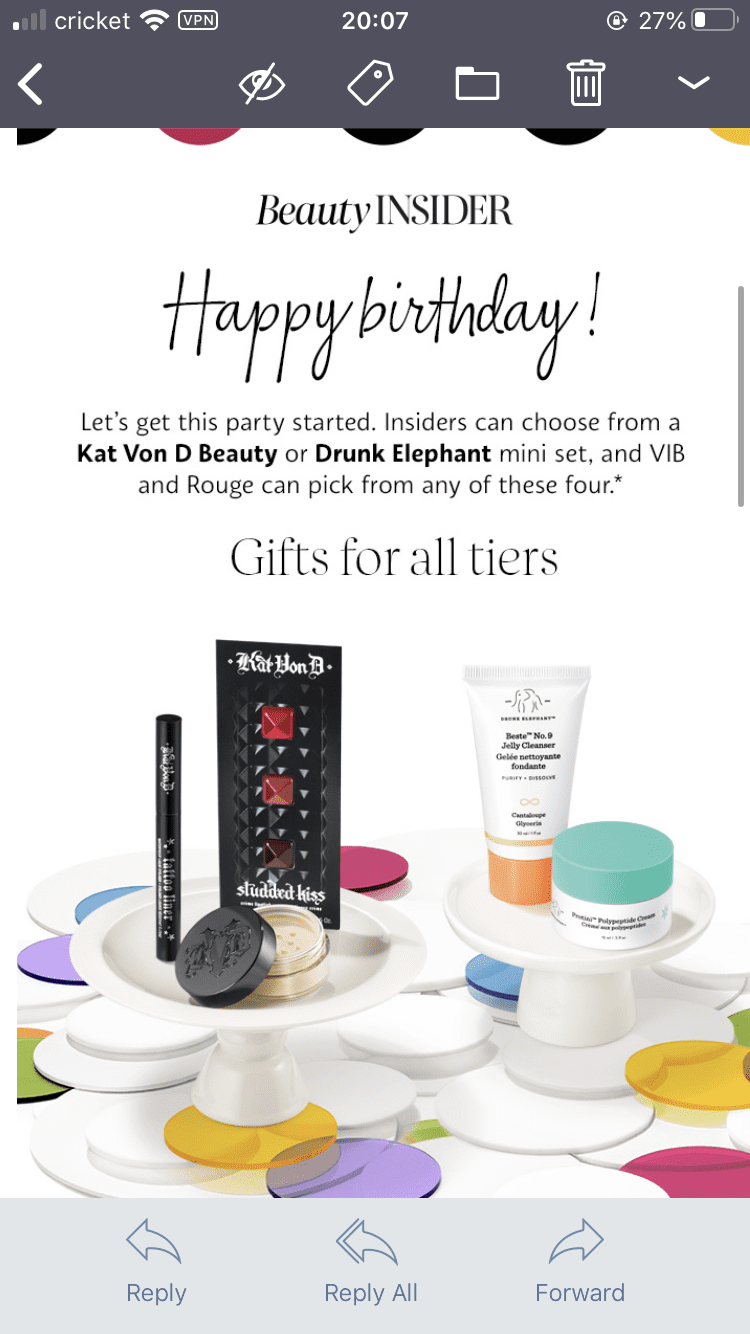

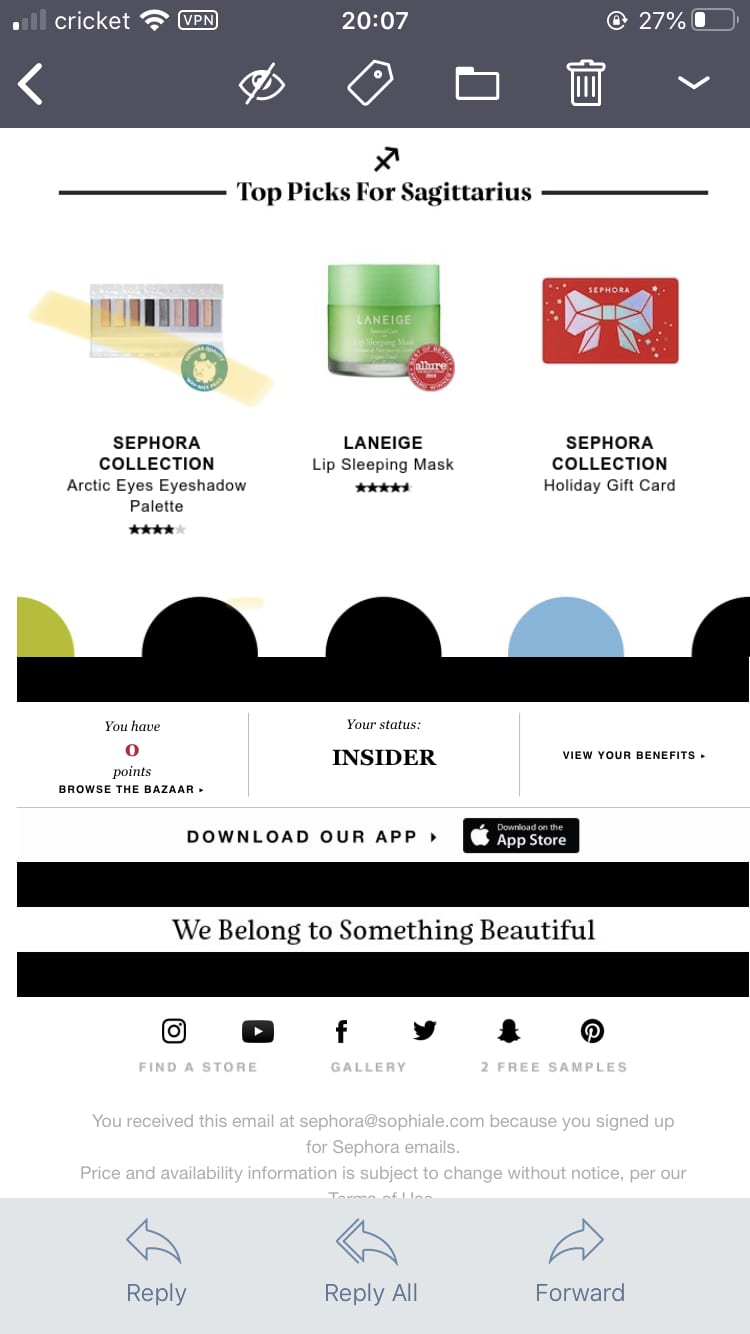

Sephora’s birthday email to members of their Beauty Insider loyalty program.
Sephora is well-known in the beauty industry for its generous return policy, so offering a cosmetics mini-set as a birthday gift helps Sephora advertise new products—and allows its loyal clientele to try new products before they purchase larger versions.
Once you’ve chosen a milestone, collected the data and nailed down the offer, you’re all set to build a customer milestone campaign!
A Quick Recap on Customer Milestone Campaigns
Regardless of what your brand chooses for a milestone, remember these two things:
- It’s important to celebrate your customers’ victories throughout the year—not just during a birthday or anniversary.
- The most effective milestones are the ones that affirm a customer’s identity
If you’re just getting started with milestone campaigns, remember that you need these three essential ingredients for the best results:
- A milestone to celebrate
- Data to support that milestone
- A relevant offer
Download our full guide to master these essentials and get creative with advanced cross-channel tactics. Inside, you’ll learn how to use SMS, mobile push notifications, in-app messaging and social retargeting to enhance your campaign.
Now that you’re an expert on how to build a customer milestone campaign, what are you going to do to stand out from the crowd?






























